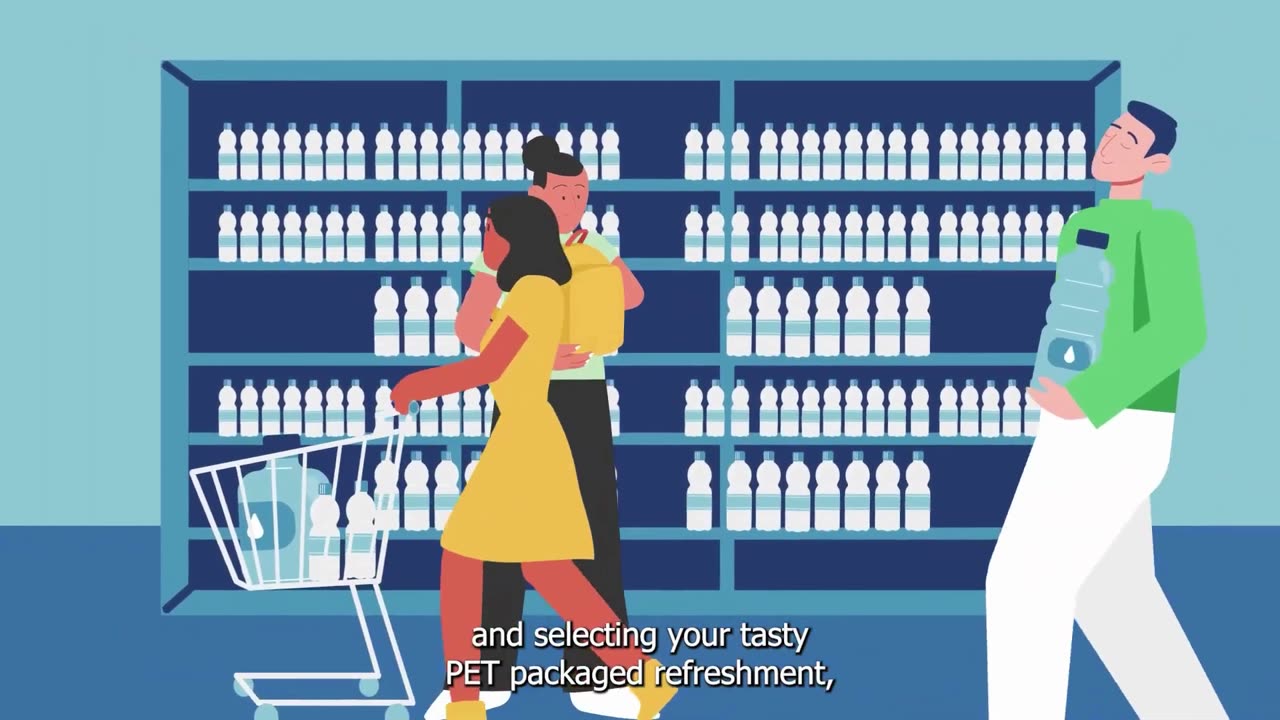Premium Only Content

The Truth About PET Packaging: Sustainability, Food Waste, and Reusable Benefits
Plastic plays a significant role in the manufacturing and packaging industry. Its versatility enables it to be moulded into different shapes and sizes, alongside many other useful properties.
However, as the world continues to take action against the global environmental impact of plastic, many companies are revising their operations to implement sustainable practices.
PET plastic is a sustainable packaging option and the leading type of plastic used for beverage bottles, owing to its excellent chemical resistance to organic materials and water, and high strength to weight ratio. Here we’re going to explore what exactly PET bottles are, assess their benefits, and compare them to other plastic types.
Is PET more eco-friendly than other types of plastic? PET is the preferred for plastic bottles (and other uses) as it’s 100% recyclable and highly sustainable. It can be recovered and recycled into new products again and again, reducing the amount of resources wasted. This is unlike other types of plastic, such as polyvinyl chloride (PVC), low-density polyethylene (LDPE), polypropylene (PP), polystyrene (PS), which are used for things cling film, single-use plastic bags, food containers, and disposable cups respectively.
PET also has a low carbon footprint as it uses less energy during manufacturing, which helps suppliers to reduce overall energy consumption.
Life cycle of PET The life cycle of a PET product can be very long, with low plastic waste created if consumers correctly dispose of it. The material is easy to recycle, and recycled PET is a valuable commodity with its closed loop potential. Most PET bottles are clearly labelled with the #1 resin code that indicates to consumers it’s fully recyclable, PET plastic. Some plastic containers are multi-layered, for instance, which some find time-consuming to sort properly.
Is PET safer than other types of plastic? As previously mentioned, PET is shatterproof and will not cause harm if broken or damaged — it’s known as the ‘safe’ plastic. PET doesn’t contain Bisphenol-A (BPA) either, a chemical that can be harmful in large quantities. Some types of plastic contain this, and it’s been reported to interact with the body’s endocrine system, potentially causing negative health effects. This is the main reason why so many consumers are switching from polycarbonate to PET water coolers, with the former type of plastic often containing BPA.
Overall, PET is a safe, hygienic packaging solution, approved by official health and safety boards. Its composition means it doesn’t react with any food or liquids that come in contact with the material, making PET bottles risk-free and safe to drink from.
#reusep.e.t #recyclep.e.t #reducep.e.t #sustainabilityinplastic #sustainable #circularity #carbonfootprint #papervsplastic
-
 4:31
4:31
SLS - Street League Skateboarding
10 days agoFuna Nakayama 3rd Place at SLS Sydney 2024 | Best Tricks
77.7K11 -
 2:15:24
2:15:24
vivafrei
21 hours agoEp. 236: BARNES IS BACK! Election Recap! Trump Nominees! Trump Persecutions - Wha's Next? & MORE!
266K277 -
 6:25:47
6:25:47
SynthTrax & DJ Cheezus Livestreams
20 hours agoDJ Cheezus & DEF JAM Fight for NY on PS2 - Hip Hop Violence and Vibes (1pm PST / 4pm EST)
108K4 -
 2:01:47
2:01:47
Nerdrotic
15 hours ago $14.75 earnedEgypt, Peru and Guatemala Luke Caverns RETURNS! | Forbidden Frontier #082
91.6K10 -
 LIVE
LIVE
Vigilant News Network
16 hours agoFDA Approves Trials for New “Pandemic” Vaccine | Media Blackout
1,960 watching -
 4:06:21
4:06:21
GamerGril
16 hours agoIM THE GREASTEST OF ALL TIME AT.... CHAOS | DAYS GONE
128K12 -
 3:00:18
3:00:18
Due Dissidence
1 day agoTHE PEOPLE VS NATURE by Kevin Augustine - plus a talkback w/ Jimmy Dore
144K22 -
 6:02:06
6:02:06
Rotella Games
22 hours agoMake the Hood Great Again | Day 3 | GTA San Andreas
95.9K6 -
 2:50:48
2:50:48
PudgeTV
22 hours ago🟡 Practical Pudge Ep 48 with "Willie Faulk" | Catching Up With Old Friends
83.2K3 -
 18:32
18:32
Forrest Galante
1 day ago5 Extinct Animals That I Believe Could Still Be Alive...
184K39